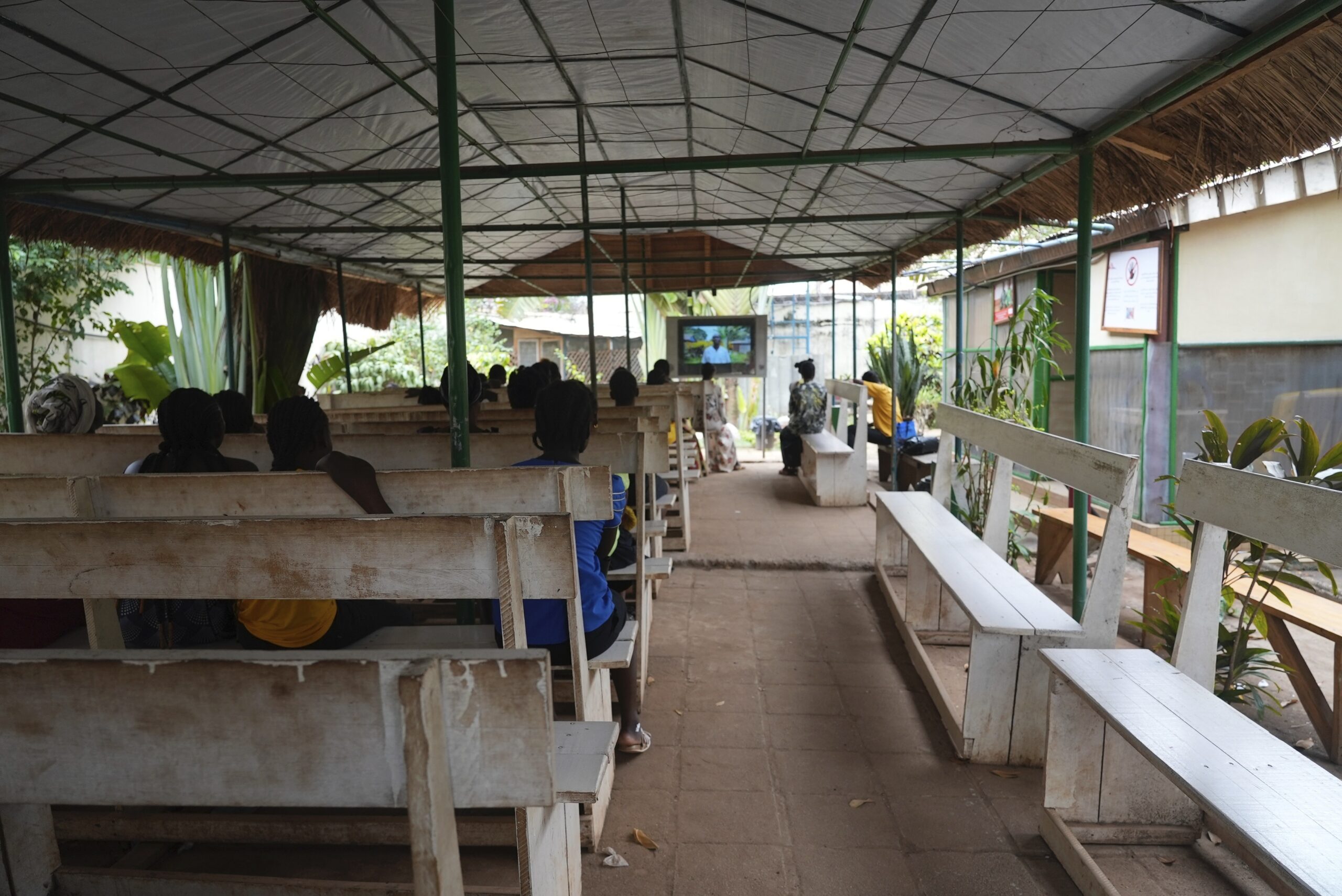For example, in 2017, the Vancouver Principles established international guidelines for child protection and peacekeeping training procedures in conflict zones. More than 100 countries have now endorsed them.
It is now more important than ever to consider how wars and other organized violence impact communities, particularly children, in regions as varied as the Democratic Republic of the Congo, Gaza, South Sudan and Lebanon.
However, our recent interviews with UN peacekeepers at the National Peace Operations Training Institute in Uruguay – part of our UBC study on improving child protection in conflict zones – revealed gaps in translating peacekeeping policies into practice.
In particular, we found that women’s participation in peacekeeping operations must be increased to enhance child protection.
Civilian populations, especially the most vulnerable – children, women and the elderly – often prefer to approach female peacekeepers. After all, men are usually the main perpetrators in conflicts and male peacekeepers have sometimes been among the guilty in inflicting violence, including sexual violence.

The Elsie Initiative
Canada is leading an international effort to help with this issue via the Elsie Initiative for Women in Peace Operations, particularly in supporting women’s familial commitments, which can impact their participation in peacekeeping missions.
The initiative is supported by a contact group of 13 countries. It promotes equitable opportunities for women in uniform, particularly in operational command and leadership roles, and in non-traditional positions.
It aims to increase women’s meaningful participation in peacekeeping operations through its
MOWIP assessments (measuring opportunities for women in peace operations) and through implementing action plans.
It is also offering bilateral technical assistance, as well as exchanging best practices and innovative approaches with troop-contributing countries such as Ghana, Senegal and Zambia.
Canada and its partners in the initiative have started a pilot program in Mali for women to be deployed in peacekeeping for only six months – half as long as usual. It has also started to provide financial incentives to encourage more women to join peacekeeping forces.
There are still many issues to overcome.
Women once made up a significant proportion of Canada’s peacekeeping troops (25 per cent in the 2018-19 deployment to Mali, for example). Unfortunately, that number has fluctuated and is declining in some missions. To make progress, Canada and other countries need to retain women currently serving and attract more to enlist.
More peacekeeping roles should be open to non-military women. With training, non-military women could fill positions in translation, medical care, cross-cultural bridging, military observers and staff (all currently filled by military women), leaving military women free to serve in peacekeeping military contingents.
This is unconventional but some of the best solutions always are. The participation of women in peacekeeping operations will support sustainable, long-lasting peace in conflict zones.
Our interviews with UN peacekeepers revealed a fundamental ambiguity in the role of child soldiers. They are sometimes active participants on the battlefield but are also victims of coercion who may be forced to spy or serve in other visible or invisible (generally invisible in the case of girls) capacities.
This makes it difficult for peacekeepers to protect all children in war zones, especially when reflexive labels and internalized stereotypes cloud vision on the field. It is more important than ever that Canada and the international community consider the various forms of manipulation employed to control children, especially girls, in conflict zones.
One way to help is to have more women peacekeepers, who can play a key role in building trust with local communities.
The power imbalance
It is also important to recognize the power imbalance between civilian populations and peacekeeping troops, most of whom are armed, unlike the civilians around them.
Women soften the image of peacekeeping troops and potentially make them more approachable to locals who may not trust troops they regard as foreigners on their land. Of course, this can vary depending on a country’s local and cultural context. Women peacekeepers may not always be welcomed because of traditional roles or religious issues.
Like most contributing countries, Canada faces obstacles to increasing female representation in peacekeeping. Women may choose not to apply to the military because of distorted perceptions and misinformation about deployment conditions and provisions.
Women interviewed said they worry about the availability of menstruation and other hygiene products in remote locations such as the middle of the jungle. It is important to make them aware that these necessities are available in deployment zones.
Our research also found that some women regard peacekeeping as unattractive as they struggle to balance familial commitments against the length of deployment, which has historically been one year. That can deter women who act as caretakers for their parents or in-laws or are single parents/guardians of children, especially those younger than 10.
In these cases, women struggle to cover the financial cost of caring for their loved ones in their absence and may feel guilty about being absent from the caregiving roles traditionally associated with women. Part of the way forward here, of course, is to get men to take on more caregiving responsibilities but the military can also make peacekeeping service more attractive to women.
Creating gender-balanced teams in peacekeeping missions is essential for encouraging children and women in local communities to report incidents of violation. This is due to cultural norms in many locales that make it easier for vulnerable populations to engage with women.
For instance, girls and women in certain Islamic countries or communities are not permitted or do not wish to be examined by male doctors. These norms, often grounded in religion, should be respected by foreign troops.
Therefore, peacekeeping missions must ensure the integration of women in military and non-military roles, such as medical care, translation and law enforcement, to make it easier for children and women to seek assistance from gender-balanced and culturally sensitive engagement teams.
That is imperative for identifying risks of violations, strengthening child-protection mechanisms and enhancing child agency.
The risks to children in war-torn regions are intensified based on their gender and social standing. Children with physical or cognitive limitations are even more vulnerable to grave exploitation.
Undertaking a detailed analysis of these risk factors would help mitigate some of these instances of violence through targeted measures in collaboration with the local population.
One peacekeeper we interviewed told the story of children in South Sudan who steal food from peacekeeping missions and other institutions by removing clothes and applying oil or blood to their bodies to make them slippery so they can more easily escape if caught. These are the risks a child will take when starving, especially if orphaned.
Peacekeeping missions can work with humanitarian organizations to strengthen community-based programs to address some of these risks and to provide nutrition and protection.
Awareness of children’s rights
Engagement mechanisms with children in conflict zones must be reviewed to ensure they are accessible to children and that their rights are put first because children are often not aware of their human rights.
Children don’t always have the writing skills or the availability of an internet-activated device, which may deter reporting the abuse they suffer. Electronic reporting, such as email, should therefore not be the only way to report a violation in these settings.
The focus must also be on creating awareness of children’s rights. Radio or age-appropriate comic books in local languages can disseminate important information that empowers children.
Most importantly, child agency must be a central pillar in child-protection measures, so children are directly involved in decision-making procedures concerning their future. This should be on a case-by-case basis because children’s development and understanding will differ based on their age, mental development and experiences, especially if they are without a parent or guardian.
We need to go beyond viewing children as mere victims and acknowledge them as agents of change who can communicate the needs of their communities to shape the dynamics of peacekeeping, and even peacebuilding.
It is just as necessary to tackle the institutional gaps to strengthen the role of effective peacekeepers to protect youth and empower children.
One important institutional gap we identified is that peacekeepers often carry out policies designed by experts who have never actually been to the locations where peacekeepers are deployed and who do not have a holistic picture of the on-ground realities.
Globally, the need for action is becoming increasingly urgent as the number of children living in conflict areas has doubled since 1990.
Effective peacekeeping policies must prioritize protecting children through gender-inclusive, accessible and collaborative measures.
Women peacekeepers bring unique perspectives and skills that can foster trust and better engagement with local communities, particularly children, women, and the elderly. Therefore, increasing the participation of women in peacekeeping operations, as advocated by the Elsie Initiative, is a crucial step toward addressing this challenge.











